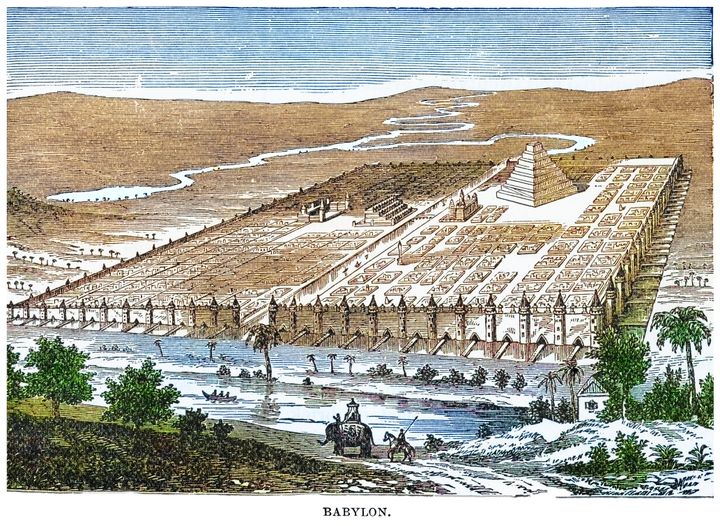
As January 1 approaches, plenty of people are drawing up their resolutions – after all, new year, new you.
But, no matter how original your 2024 aspirations may be, the idea of New Year’s resolutions have actually been around for 4,000 years.
And, considering Christmas is a celebration of Jesus’s birth – an event dating back to the start of the BCE era, 2000 years ago – that makes resolutions to mark the start of a new year an even older tradition....
Where did making New Year resolutions come from?
The ancient Babylonians were the first civilisation said to have made resolutions in the New Year – although in their calendar, the new year began around the spring equinox in mid-March, when the crops were planted.
Babylon was the capital of Mesopotamia, in present-day Iraq and parts of Syria.
Around 4,000 years ago, they welcomed in the new year through a 12-day religious festival, Akitu, and either renewed their pledge of allegiance to their current king or crowned a new one.
Their resolutions were all dedicated to their pagan deities in an effort to stay in their gods’ good books.
They usually promised to pay their debts or return borrowed tools, too – which makes a lot of sense for a primarily agricultural society, according to History.com.
How did resolutions become associated with January?
Roman emperor Julius Caesar made January 1 the start of the new year in around 46 BCE, naming the first month of the year after the god Janus.
Janus was said to be two-faced, and to inhabit liminal spaces like doorways and arches – therefore embodying both the past and the future.
Romans then adopted the concepts of resolutions from the Babylonians, only they made pledges specifically to Janus for the year ahead – and they were usually accompanied with sacrifices, History.com explains.
How did resolutions change over time?
The tradition was adopted by early Christians, who promised to improve their behaviour in the coming year.
Medieval knights then renewed their pledges to chivalry – the annual “Peacock vow” – by placing their hand on the bird at the end of the year.
Author Charles Dickens described the tradition in a Victorian periodical, All the Years Round, explaining that the bird was presented to each knight in turn.
“Each made his vow to the bird, after which it was set upon a table to be divided amongst all present, and the skill of the carver consisted in the apportionment of a slice to every one,” he explained.
For years, resolutions remained expressions of religious or spiritual devotion, but by the 17th Century, they had become more about self-improvement.
A Scottish writer Anne Halkett wrote in a 1671 diary entry, on January 2, a list of pledges taken from biblical verses, including phrasing like “I will not offend any more”. The page was titled “Resolutions”.
And a Boston newspaper from 1813 featured the first recorded use of the phrase “New Year resolution,” according to the Old Farmer’s Almanac website.
The piece also revealed how resolutions had become a source of mockery – and how we’ve been making and breaking New Year’s resolutions for at least the last 200 years.
The article said: “I believe there are multitudes of people, accustomed to receive injunctions of new year resolutions, who will sin all the month of December, with a serious determination of beginning the new year with new resolutions and new behaviour, and with the full belief that they shall thus expiate and wipe away all their former faults.”
Are we any good at keeping resolutions?
Unsurprisingly – not really.
According to YouGov, only 31% of Brits who said they made resolutions for 2023 kept to them all.
But, 16% of YouGov’s 2,054 respondents still plan on making a new resolution for 2024.
The most common one is doing more exercise, or improving physical fitness (56%) while other popular resolutions include saving more money (49%) and losing weight (45%).
Previous YouGov research from 2017 found that just six days into the new year, one in five people had already failed some of their resolutions.